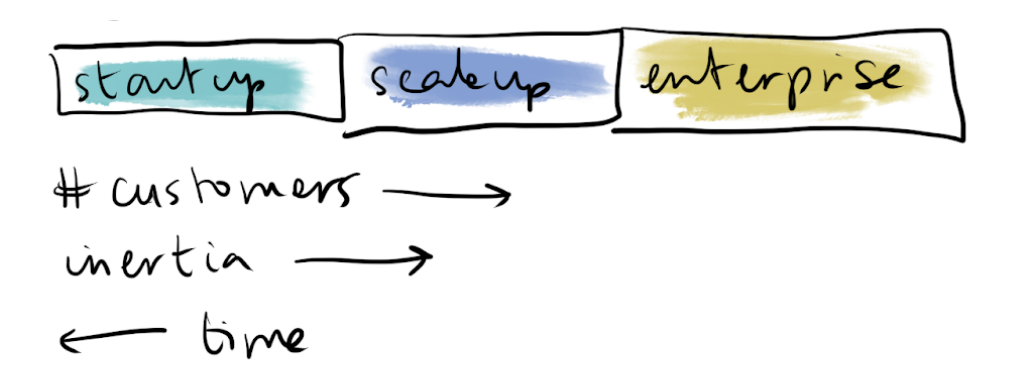The spectrums of product experimentation
As a child, I have vivid memories of seeing the rainbow in the sky. I also remember pointing plastic pens to the sun to project the visible light spectrum on walls. It was pure magic.
These past experiences have inspired me to envision the spectrums of product experimentation.
The visual paradigm of a continuous spectrum is a good fit for two reasons. First, experimentation is a continuum of activities across discovery and delivery. There is no interruption. Second, the electromagnetic spectrum is the range of frequencies and their respective wavelengths. Likewise, the execution of experimentation depends on internal and external factors.
I propose three spectrums of product experimentation:
- Problem-solution
- People
- Organizations
Problem-solution

The first spectrum is composed of two segments – problem and solution. In the problem segment we focus on reducing the risk and uncertainty of an idea. In the solution segment we deliver real value to our customers and our business.
Mark Twain’s popular adage “To a man with a hammer, everything looks like a nail” applies here. It means that the tools that we apply to problems alter our perceptions of the challenges we face and the solution that is appropriate. So if you only have a hammer you are very likely to try and fix everything using it without considering other options. This means that having a deep tool box is essential to tackle problems and solutions from a different perspective and for a given context.
The problem and solution segments have many macro and micro approaches. But technology is the key factor that spans both. The rise of low- and no-code platforms offers the proposition that anyone can quickly build their own applications with minimal to no coding expertise. The user can build applications visually, or often “Lego-style” by custom dragging and dropping pre-configured components and widgets onto a blank slate.
The range of possible technical approaches include:
- No code (drag and drop)
- Low code (edit or write custom code with programming languages)
- Tech stacks
- Extended Reality tech stacks
- Combination of the above
Are you taking full advantage of all available technical approaches?
People

The second spectrum is about people because experimentation is intentional. The main thread across the three segments is collaboration. Although collaboration is critical in experimentation, it is not straightforward to master. Collaboration requires individual and group effort. During experimentation a lot of information and knowledge sometimes overlaps or is in conflict. Decision fatigue is common. So with the help of collaboration, we can get a diverse set of perspectives and voices on a problem to reflect on the best next step.
Collaboration is affected by two main factors – dependencies and lines of communication. When the number of teams increases, dependency management can skyrocket if team boundaries are ill defined. Similarly, lines of communication exponentially increase with more people. Decision making and the flow of communication can slow down.
These are some activities to tackle dependencies and lines of communication:
- Daily standup
- Problem brief kick-offs
- “What have we learned” weekly meetings
- Demo showcases
- Communities of practice
- Access to an internal experiment library
Which of the above are you not practicing?
Organizations

The last spectrum is the most complex. It focuses on business maturity and follows the growth trajectory of a product from left to right.
Each segment has its own specific challenges. The best advice to startups is to embrace a culture of experimentation as early as possible. All odds are against you at this early stage. As the business matures, organisational structure is critical to remain nimble and accelerate change in an emerging and uncertain world. During global expansion, innovation enables accelerated learning to survive the challenges from new or existing comparable products.
The obvious factor across all segments is time. For startups time is of the essence. A second essential factor is customers. Without them there is no business. Finally, the third factor is well documented and discussed. Inertia is the source of most problems of corporate survival and growth.
How to address these three factors is the focus for future posts. For now, here are some useful tips:
- Regular customer interviews
- Beta community
- Digital platform
- Business strategic objectives aligned to personal objectives
I invite you to draw your own product experimentation spectrum(s).
What have you learned?

